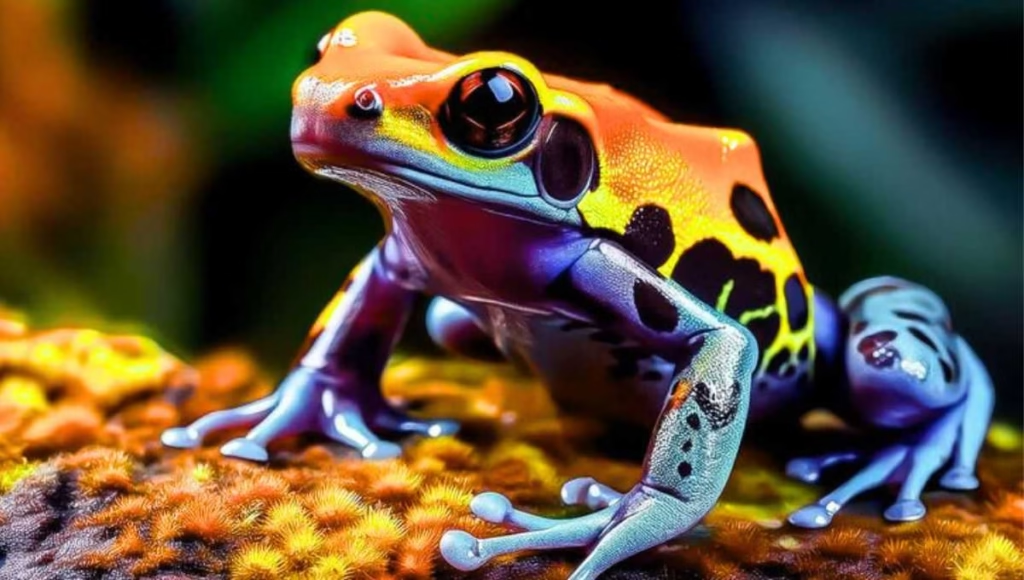Nature’s Dual-World Wonders
Have you ever wondered how some animals can live both on land and in water? These remarkable creatures, known as amphibians, have unique adaptations that help them thrive in two different environments. From frogs and crocodiles to turtles and seals, each species has developed incredible survival skills.
In this article, we’ll explore the top 7 animals that can live both on land and in water, revealing their fascinating lifestyles, habitats, and adaptations. Whether you’re a nature lover, a student, or just curious about the animal kingdom, this list will give you a deeper understanding of some of the most versatile animals on Earth.
1. Frogs – True Amphibian Icons
Frogs are the most well-known animals that live both on land and in water. They start their lives in water as tadpoles and gradually transition to land as adults.
Key Adaptations:
- Moist, permeable skin helps with skin respiration.
- Webbed feet make swimming easier.
- Powerful hind legs allow for long jumps on land.
Habitat: Found worldwide near ponds, lakes, and wetlands.
Fun Fact: Some frog species can hibernate underwater during the winter.
2. Turtles – Armored Travelers
Turtles are ancient reptiles that are able to live both on land and in water. They have a hard shell for protection and are skilled swimmers.
Key Adaptations:
- Well-designed shell for swimming.
- Strong legs for walking on land.
- Ability to hold their breath underwater for long periods of time.
Habitat: Oceans, freshwater rivers, and terrestrial areas.
Fun Fact: Sea turtles can stay underwater for up to five hours without coming up for air.
3. Crocodiles – Ancient Predators
Crocodiles are the most powerful amphibious reptiles. They spend most of their time in water but can move quickly on land if necessary.
Key Adaptations:
- Eyes and nostrils are placed on top of the head for easy breathing while submerged.
- Webbed feet for swimming.
- Powerful tail used for propulsion in water.
Habitat: Rivers, swamps, and marshes in tropical regions.
Fun Fact: Crocodiles can stay underwater for over an hour while waiting for prey.
4. Otters – Sporty Swimmers
Otters are semi-aquatic mammals known for their playful nature and intelligence. They can easily adapt between land and water environments.
Key Adaptations:
Thick fur that keeps them warm in cold water.
- Webbed feet for fast swimming.
- Flexible bodies that allow for agile movement on both land and water.
- Habitat: Found in rivers, coastal areas, and wetlands.
Fun fact: Otters use small stones to crack open shellfish – one of the few mammals to use tools!
5. Penguins – Flying Divers
Although they are flightless, penguins are exceptional swimmers who spend part of their lives on land. They are masters of the icy waters of the Southern Hemisphere.
Key adaptations:
- Streamlined bodies that act like torpedoes underwater.
- Powerful flippers for swimming instead of wings.
- Thick layers of fat and feathers for warmth.
Habitat: Coastal areas of Antarctica, South Africa, and South America.
Fun fact: Penguins can dive up to 500 meters deep in search of fish.
6. Water Snakes – Slithering Amphibians
Water snakes are adept at surviving in both aquatic and terrestrial habitats. They can swim gracefully in water and slither skillfully on land.
Key adaptations:
- Flat bodies for easy swimming.
- Scales that prevent water absorption.
- Excellent ability to hold their breath while hunting underwater.
Habitat: Found near rivers, lakes, and swamps.
Fun fact: Many people mistake harmless water snakes for venomous snakes like vipers — but most are not venomous.
7. Seals – Land Inspectors of the Sea
Seals are fascinating marine mammals that divide their time between land and water. They mainly come ashore to rest, mate, and give birth.
Key adaptations:
- A streamlined body for high-speed swimming.
- Flippers that function both for swimming and crawling on land.
- A thick layer of blubber to insulate them in cold water.
Habitat: Arctic and Antarctic coasts, rocky shores, and islands.
Fun fact: Seals can dive to depths of over 1,000 meters and can stay underwater for 30 minutes or more.
From frogs to seals, these creatures, living both on land and in the water, demonstrate nature’s incredible adaptability. Their unique physical and behavioral traits help them conquer two completely different environments.
While we learn from them, it’s important to protect their habitats – because conserving them means preserving the balance of our planet’s ecosystems.
FAQs
What are animals called that can live both on land and in water?
They are known as amphibious animals. The term “amphibian” literally means “double life.”
Which animal is the best example of living on land and water?
Frogs are considered the best example due to their complete life cycle in both environments.
Can reptiles live both on land and in water?
Yes, reptiles like turtles, crocodiles, and certain snakes are semi-aquatic and thrive in both habitats.
Why do these animals need to live in both environments?
Many species depend on water for breeding, feeding, or thermoregulation, while using land for resting or nesting.
Do these animals face environmental threats?
Yes. Pollution, habitat loss, and climate change are major threats to amphibious species worldwide.
Explore more fascinating wildlife facts and environmental insights at indnexa.com.
Hi readers. I’m Piyali Batabyal, a passionate blogger who loves to share her thoughts, ideas, and experiences across a variety of topics—from lifestyle and beauty to personal growth and creativity. With a curious mind and a love for words.
Alongside my writing, I am also a professional makeup artist with a flair for enhancing natural beauty and creating transformative looks.

